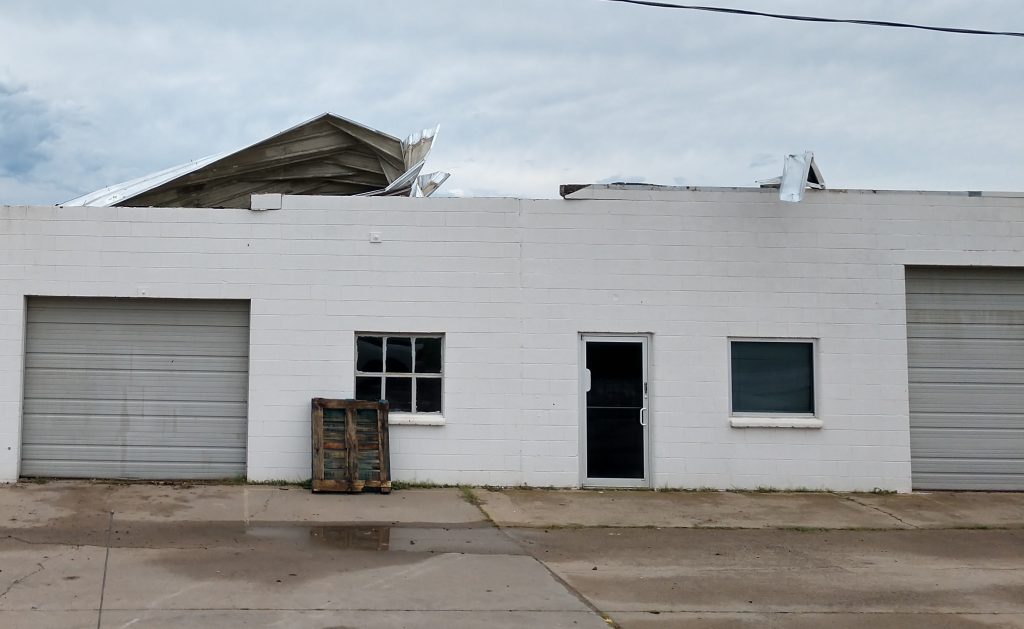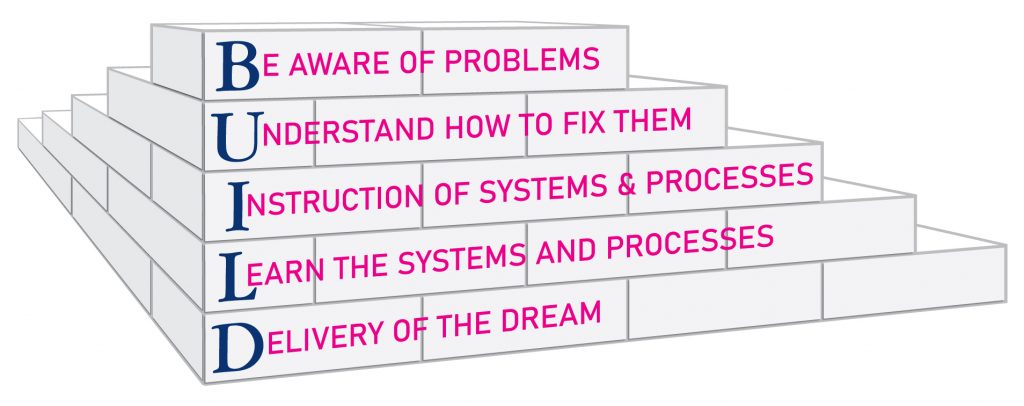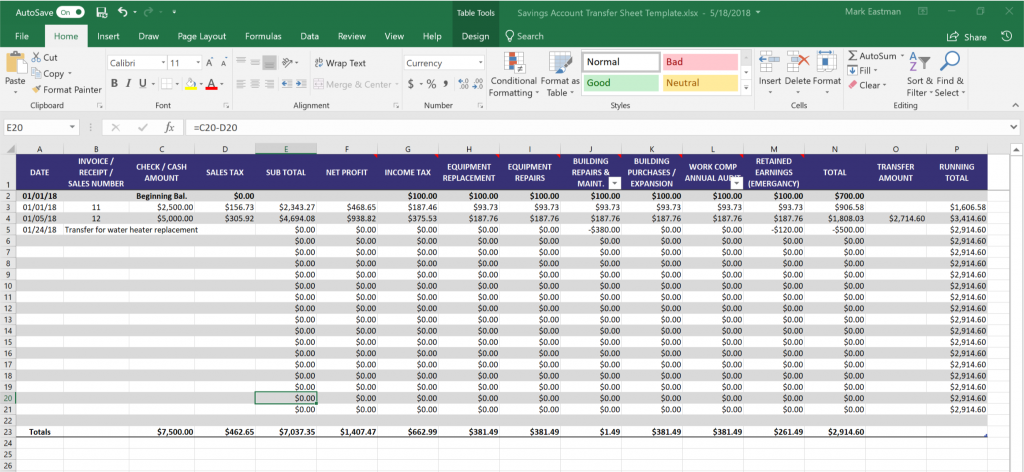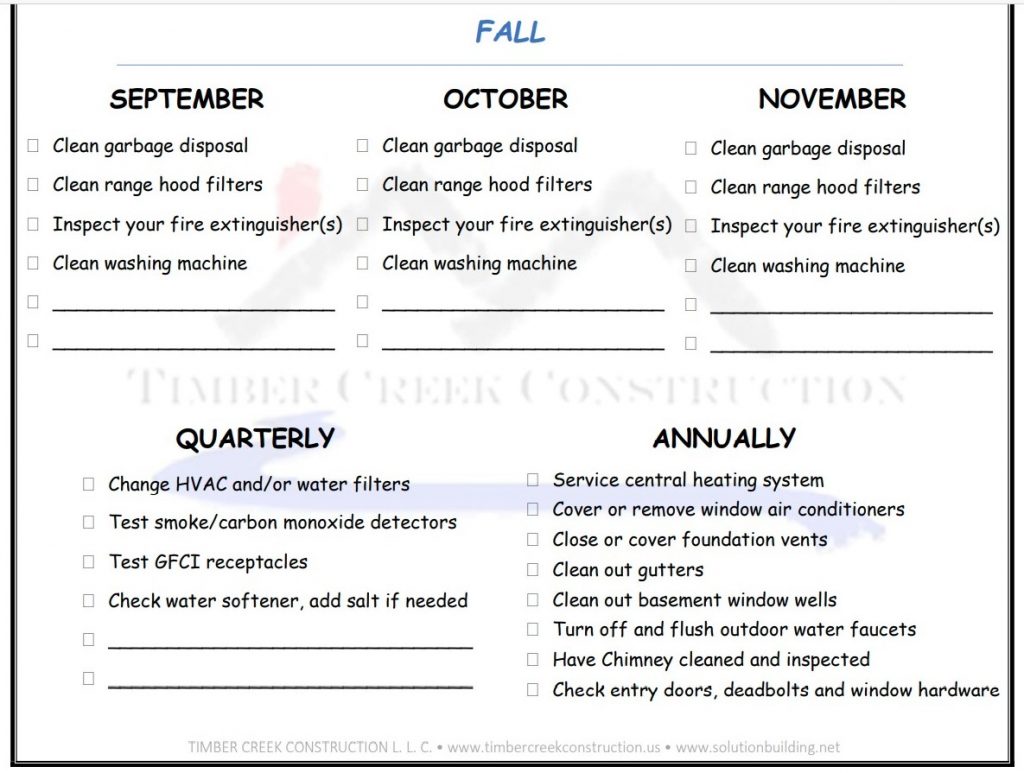The Best Way is to Have a Home Maintenance Plan
It’s hot here in Kansas right now and doesn’t look like it will be cooling down any time soon. They’re predicting 100+ degree weather for the next several days. That makes me sweat just thinking about it.

Having said that…I realize that we’re just a few weeks away from fall, and it will be freezing before you know it. As I was thinking about this, I realized that it won’t be long before I need to be getting ready for winter.
It’s time to get the Home Maintenance Plan out.
Home maintenance – Prevents breakdowns, saves money, and keeps your home in the best possible condition. This regularly scheduled review can expose conditions that might not otherwise be found. This reduces mental, physical, and financial stress and strain.
Seasons happen every year and are a natural part of life. Each of these seasons presents different weather conditions and temperatures which affect your home in varying ways. We often use calendars to schedule our lives. Combining the seasons and our calendars into a Home Maintenance Checklist breaks a big responsibility into small manageable scheduled tasks.
It’s easy for the busy activities of everyday life to consume us, and home maintenance gets overlooked. This is why I prepared a Home Maintenance Plan and Check List. It’s available for free at our Solution Building website. Just follow the links, fill out the form, and download it for free.

This includes plans for monthly, quarterly, annual, and seasonal maintenance including a seasonal check list.
MONTHLY MAINTENANCE – These tasks should be done every month. You might prefer to schedule one day to do them all or spread them out over the month doing one or two items periodically throughout.
Monthly Maintenance includes things like –
- Cleaning garbage disposals
- Cleaning range hood filters
- Inspecting fire extinguishers
- Cleaning washing machines
QUARTERLY MAINTENANCE – These quarterly tasks, like the monthly ones, can be scheduled for one day each quarter or disbursed throughout the quarter at monthly, weekly, or other intervals. The important thing is to schedule them and do them.
Quarterly Maintenance includes things like –
- Changing HVAC filters
- Testing smoke/carbon monoxide detectors
- Testing GFCI receptacles
- Checking water softener salt levels

ANNUAL MAINTENANCE (By Season) – Annual tasks are more seasonal than monthly or quarterly. There is still some flexibility that can be determined by your own preference or life schedule. Some of them are not specific to the season but have been placed as they have, to spread more evenly throughout the year.
Annual Fall Maintenance includes things like –
- Service central heating systems
- Cover or removing window air conditioners
- Closing or covering foundation vents
- Cleaning out gutters
- Cleaning out basement window wells
- Turning off and flushing outdoor water faucets
- Chimneys cleaned and inspected
- Checking entry door and window hardware
Even this small portion of the complete Home Maintenance list can seem overwhelming. But like any big project, if you break it down into individual tasks, spread them out, and schedule them, it’s doable, like eating an elephant one bite at a time.
It’s a lot better to routinely do maintenance than wait until something falls apart.
That’s why home maintenance can help you preserve and protect that big investment of your home.
Get your free Home Maintenance Plan and Check List here.







































